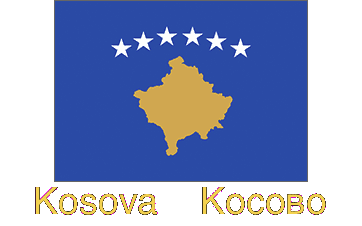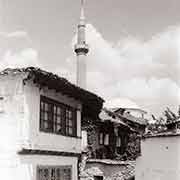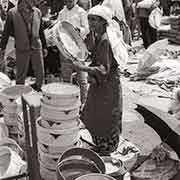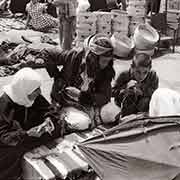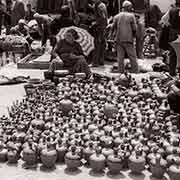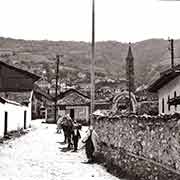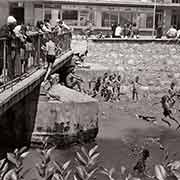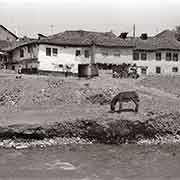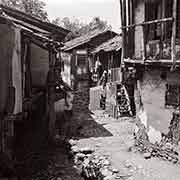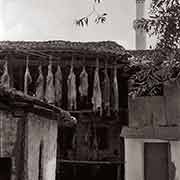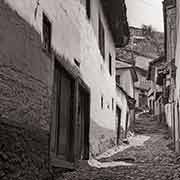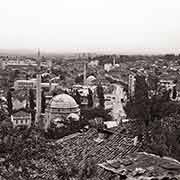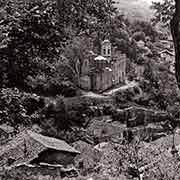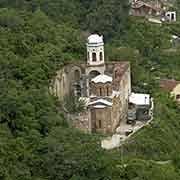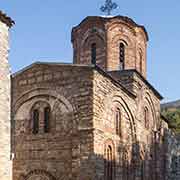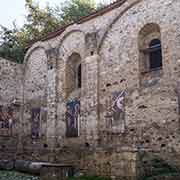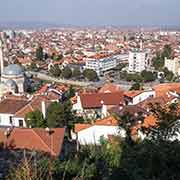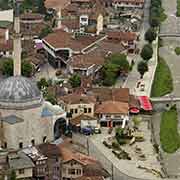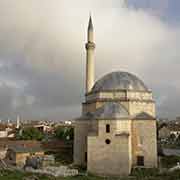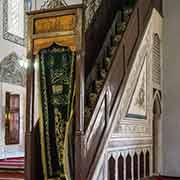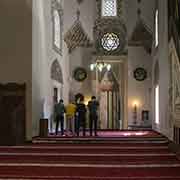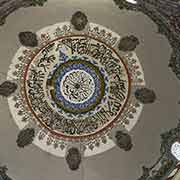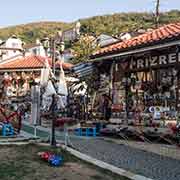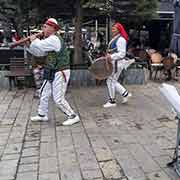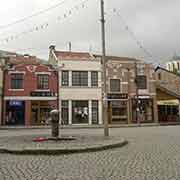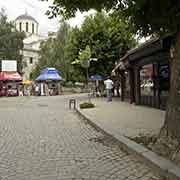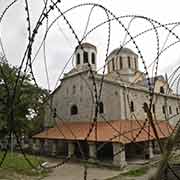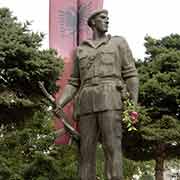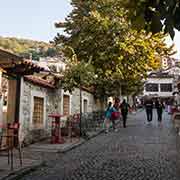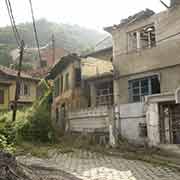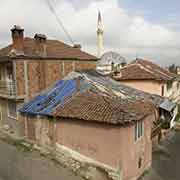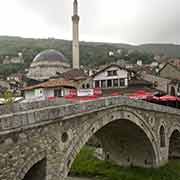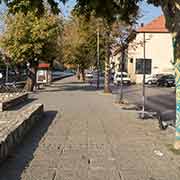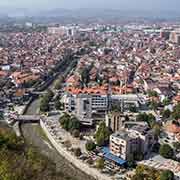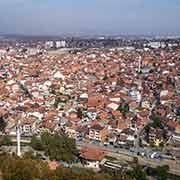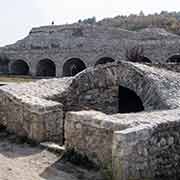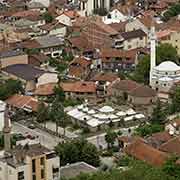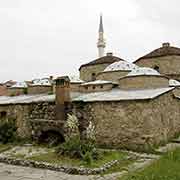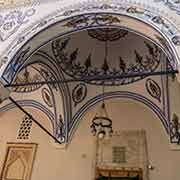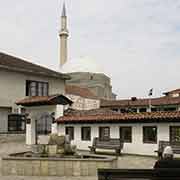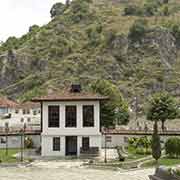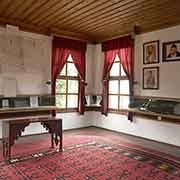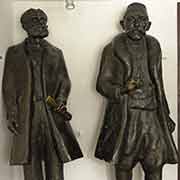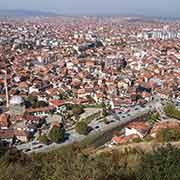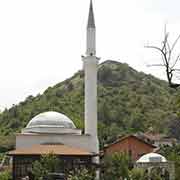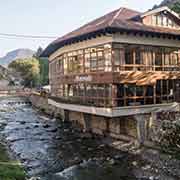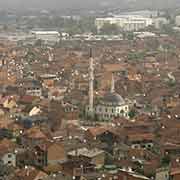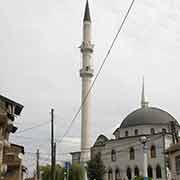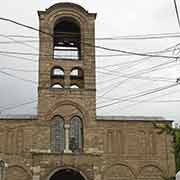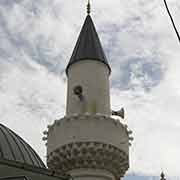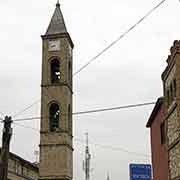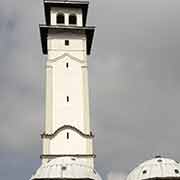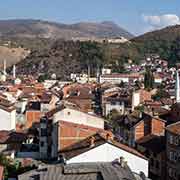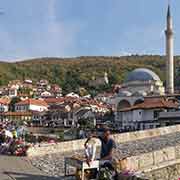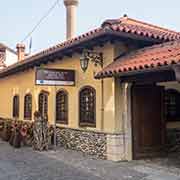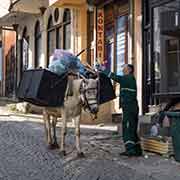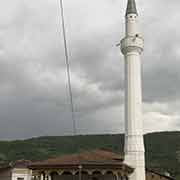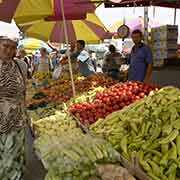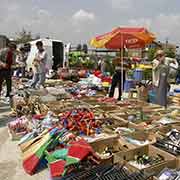Photos of Prizren, Kosovo's most Oriental City, Kosovo
Prizren, Kosovo's most Oriental City
Prizreni (or Prizren in a sentence with a preposition like “to”, “in” or “from Prizreni”) is the third largest city of Kosovo. It has a population of around 114,000, mostly Albanians. The Serbian name is Призрен (Prizren). It is located on the slopes of the Shar Mountains in the southern part of Kosovo with the Lumbardhi i Prizrenit (Bistrica) river flowing through it. It is named “the most Oriental city in Europe” because of its many reminders of the time it was part of the Ottoman Empire.
you may then send it as a postcard if you wish.
The area of the Prizren valley has been settled by Illyrians, the ancestors of Albanians, since ancient times. It was known as Theranda in Roman times. Its current name may derive from “pri”, meaning “fortress, town” and “Zeranda”, a modification of the name Theranda, which makes Prizeranda. Around 830 the city and the whole region were included in the Bulgarian Empire. It fell to the Byzantines in 1018, briefly reverted to Bulgarian control but restored to Eastern Roman rule in 1073. After brief Serbian, Byzantine and Bulgarian control it was finally seized in 1208 by Grand Prince Stefan II Nemanjić of Serbia. The town became the seat of the Serbian Orthodox Prizren Episcopate and, during the reign of Emperor Stefan Dušan throughout the 14th century, Prizren was the political centre of the Serbian Empire. The city of Prizren became known as the Serbian Constantinople because of its trading and industrial importance. It was the centre of production of silk, skilled trades and a colony of merchants from Kotor and Dubrovnik.
In 1545 it was taken by the Ottoman Empire and became a part of the Ottoman province of Rumelia. It was a prosperous trade city, benefiting from its position on the north-south and east-west trade routes across the Empire. Prizren became one of the larger cities of the Ottomans' Vilayet of Kosovo (Province) and its cultural and intellectual centre. It was dominated by its Muslim population, over 70% of its total in 1857. The city became the biggest Albanian cultural centre and the political and cultural Capital of the Kosovar Albanians. However, in 1871 a Serbian seminary was opened in Prizren, discussing the possible joining of the old Serbian territories with the Principality of Serbia. During the late 19th century the city also became a focal point for Albanian nationalism. It saw the creation in 1878 of the Albanian League of Prizren (Lidhja Shqiptare e Prizrenit), a movement formed to seek the national unification and liberation of Albanians within the Ottoman Empire.
During the First Balkan War in 1912 Prizren was seized by the Serbian army and incorporated into the Kingdom of Serbia. Although the troops met little resistance, the takeover was bloody. The number of killed Albanians reached 400 to 4,000. A few visitors did make it through - including Leon Trotsky, then working as a journalist - and reports eventually emerged of widespread killings of Albanians. One of the most vivid accounts was provided by the Catholic Archbishop of Skopje, who wrote an impassioned dispatch to the Pope on the dire conditions in Prizren immediately after its capture by Serbia. He wrote: “The city seems like the Kingdom of Death. They knock on the doors of the Albanian houses, take away the men, and shoot them immediately. In a few days, the number of men killed reached 400. As for plunder, looting and rape, all that goes without saying; henceforth, everything is permitted against the Albanians, not merely permitted but willed and commanded”. Not much had changed in 1999.
With the invasion of the Kingdom of Serbia by Austro-Hungarian forces in 1915 during the First World War, the city was occupied by the Central Powers. The Serbian Army pushed the Central Powers out of the town in October 1918, restoring Montenegro’s suzerainty. By the end of 1918, the Kingdom of Serbs, Croats, and Slovenes was formed - with Prizren a part of its historical territorial entity of Serbia. The Kingdom was renamed in 1929 “Kingdom of Yugoslavia” and Prizren became a part of its Banat of Vardar. The Axis Italian and Albanian forces conquered the city in 1941 during World War II; it was joined to the Italian puppet state of Albania. The Communists of Yugoslavia liberated it by 1944. It was then incorporated in “Kosovo and Metohija” (or Kosmet), under Democratic Serbia as a part of the Democratic Federal Yugoslavia. The Constitution defined the Autonomous Region of Kosmet within the People’s Republic of Serbia, a constituent state of the Federal People’s Republic of Yugoslavia. For many years after the restoration of Serbian rule, Prizren and the region of Deçani to the north west remained centres of Albanian nationalism. In 1956 the Yugoslav secret police put on trial in Prizren nine Kosovo Albanians accused of having been infiltrated into the country by the (hostile) Communist Albanian regime of Enver Hoxha. They were all convicted and sentenced to long prison sentences. But in 1968 they were released and declared innocent with Kosovo’s assembly saying that the trial had been “staged and mendacious”.
The town of Prizren did not suffer much during the Kosovo War with NATO bombing confined to some military and security force sites in and around the city. Serbian forces destroyed the most significant Albanian cultural monument in Prizren, the League of Prizren building. They also made a concerted effort to attack mosques to insult the residents' religion. Prizren's surrounding municipality was severely affected 1998-1999. Before the war, it was estimated that the municipality's population was about 78% Kosovo Albanian, 5% Serb and 17% from other national communities. During the war, most of the Albanian people were either forced or intimidated into leaving the town. At the end of the war in June 1999, most of the Albanian population returned to Prizren. Serbian and Roma minorities fled: 97% of Serbs and 60% of Romas had left town by October. The community is now predominantly ethnically Albanian. But other minorities such as Turkish, Ashkali (a minority declaring itself as Albanian Roma) and Bosniak (including the Torbesh community) live here as well. Bosniaks also live in villages around it, like Reçani (Rečane).
Further damage occurred on March 17, 2004, during the Unrest in Kosovo. This time Serb cultural monuments such as old Orthodox Serb churches were targeted. Our Lady of Ljeviš from 1307, the Church of the Holy Salvation, the Church of St. George (the city's largest church), the St. George Runjevac, a chapel of St. Nicholas, the Monastery of The Holy Archangels, as well as Prizren's Seminary and all the residences of the local priests were damaged by Albanian rioters as revenge during the unrest. Very few Serbs now remain. Likewise, a significant number of Kosovo Serbs reside in small villages, enclaves, or protected housing complexes. Furthermore, Prizren's Turkish community is socially prominent and influential, and the Turkish language is widely spoken, even by non-ethnic Turks.
In the late sixties, when the old photos were taken, Prizren was a wonderfully exotic town, with its population still mostly wearing traditional dress. Now it has become a cosmopolitan place, but its mosques - and the League of Prizren building - have been restored. For photos comparing Prizren of half a century ago with today, see Returning after half a century.


